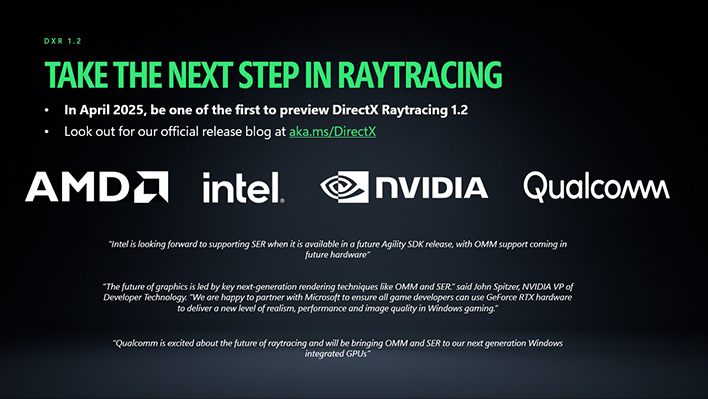Microsoft Claims Game-Changing Performance Boost With DirectX Raytracing 1.2
At the recent GDC 2025 event, Microsoft unveiled its DirectX Raytracing (DXR) 1.2 update. This, claims Microsoft, will improve performance while keeping visual fidelity high. Notably, some titles have ray tracing as a mandatory requirement, such as Indiana Jones and The Great Circle that's on Xbox Game Pass.
One of the key improvements in the updated API is opacity micromaps, which increases render efficiency while maintaining the quality. To that end, Microsoft is claiming a 2.3x improvement in path-traced gaming.

Cyberpunk 2077 is perhaps the game that NVIDIA likes to showcase most for its improvements to both ray tracing and DLSS with frame generation. NVIDIA recently introduced DLSS 4 with multi-frame generation for its GeForce RTX 50 series GPUs, upping performance even higher.
This is a crucial and often underplayed component of ray and path tracing. Due to the high performance penalties, native rendering is often poor, even on powerful hardware. Microsoft's update for better ray tracing performance is a welcome one, as the technology needs all of the help it can get.
AMD has also been improving ray tracing performance on its GPUs, notably with its newer Radeon RX 9070 and RX 9070 XT. While they've made improvements, they still trail NVIDIA, which has a lead in this segment.
With path tracing and neural rendering becoming more prevalent, performance aspects—be them on the GPU hardware side or in software with the likes of Microsott's DirectX Raytracing 2.1 update—will be just as important as the visual fidelity itself.

